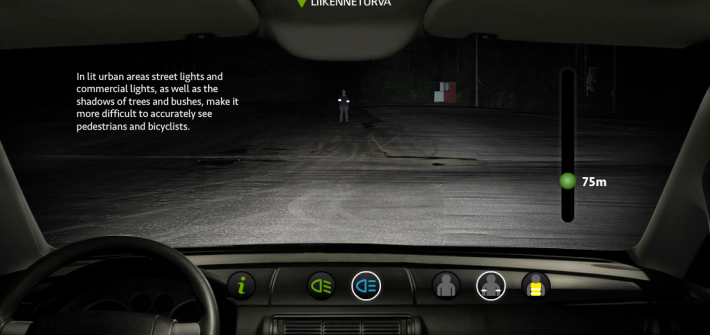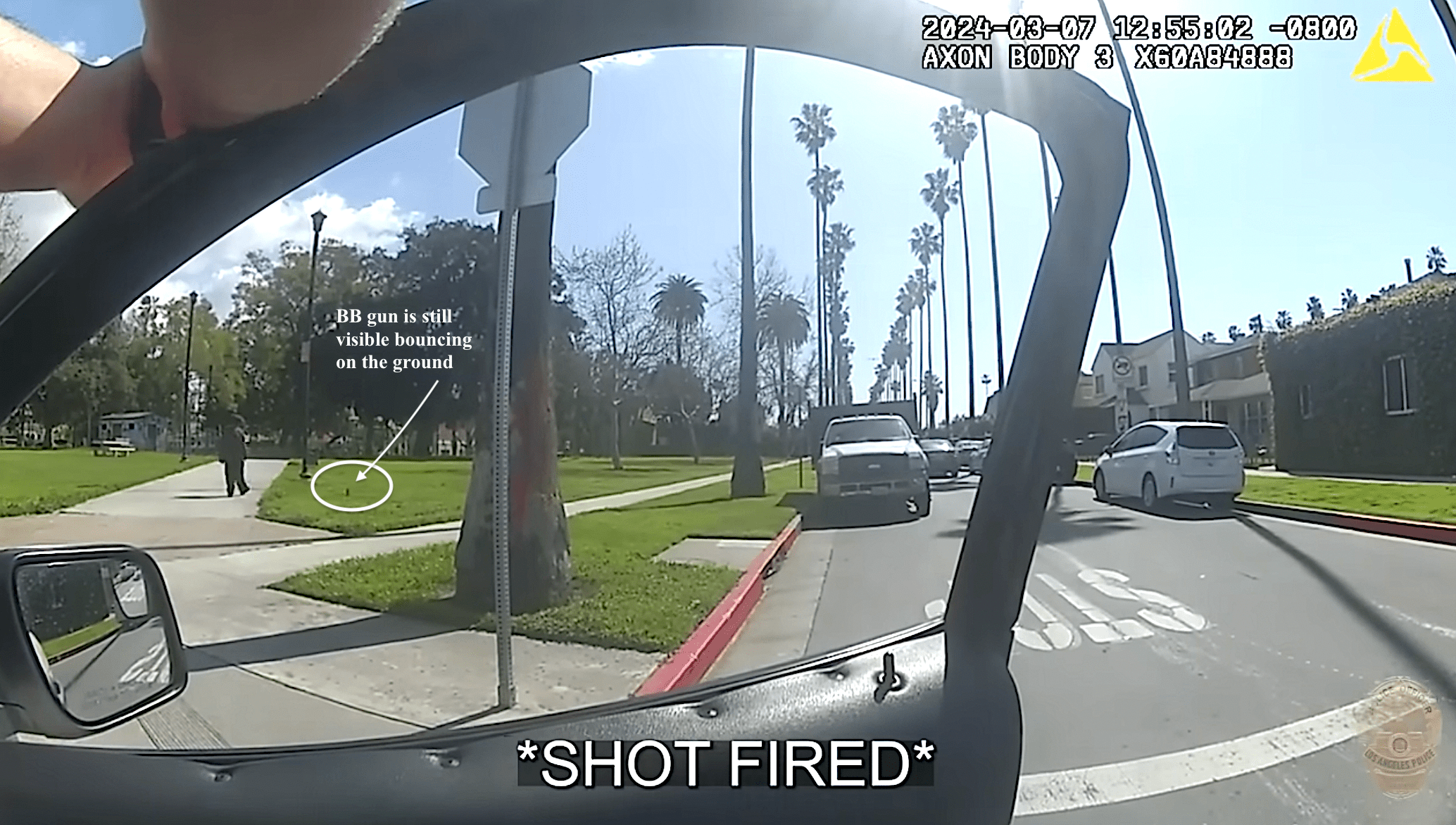Reflections on Reflectors: Should They Be Updated Now That More People Are in the Streets?
4:15 PM PST on January 6, 2014

Although the shortest day of the year has come and gone (FINALLY), we've only gained an extra six and a half minutes of daylight since the solstice.
Which means it still gets dark too darn early and will continue to do so for a while yet.
I am not afraid of riding my bike in the dark. I do, however, dread the winter rush-hour commutes which are made more stressful by the unhappy combination of more intense visual noise and less overall visibility.
Over the past few winters, I've been finding that hard-to-see bicyclists have been adding to that stress.
On more than one occasion, I've been riding a busy street like Main or Central (in South L.A.) and found myself narrowly avoiding a head-on collision with another cyclist coming directly at me out of the dark.
Because they are almost never wearing light-colored clothing, sporting any kind of reflective gear, or using lights, I sometimes don't see them until we are almost on top of each other. And, as most are on cruisers or shoddy mountain bikes and are not particularly nimble riders (save a few fast-moving kids on fixies), I tend to be the one that has to make the last-minute panicked maneuver into traffic or in between parked cars to give them space to pass.
While bicycle traffic is kind of a nice problem to have, it puts us both in danger and I could probably do without the added adrenaline rush.
My beef is not with the bicyclists, however.
It's with their crappy reflectors.
Neither I nor pedestrians can see cyclists coming or going until it's almost too late if they're only sporting basic reflectors. On dark sidewalks or unlit crosswalks, pedestrians have no way to see them coming. My front light might pick up the amber reflector on their pedals, but that is only if I am behind them. When they're coming at me, my lights are apparently not aimed at an angle that would allow me to observe the reflection on their front white reflector (if they even have one).
The question of angles is one I wonder about with regard to cars, too.
There is a greater observation angle (size of the angle between the vehicles' lights and the drivers' eyes, see here for fun graphics) in trucks, buses, and SUVs, meaning that they don't see reflectors as brightly as a car might. And, their ability to pick up any of the reflection diminishes the closer they get to the cyclist. Given the popularity of SUVs and pick-up trucks in this town, that seems problematic.
Whether a car driver sees the reflectors easily may also be questionable.
People have such different riding habits -- some hug the curb, ride on the sidewalk, take the lane, or ride the wrong way -- that if the bike isn't in the anticipated position, the lights may not hit the reflectors within a reasonable distance or at all. A cyclist with standard reflectors on their spokes that moves into an intersection from a dark sidewalk, for example, won't be seen until they are directly in front of a car.
The same holds true in cases where you are on curvy or hilly roads (hello, Hyperion "Death Bridge"?), the car's left light is out or poorly aimed, or conditions are poor (i.e. rain, fog). By the time a car's lights hit the reflectors, it may be practically on top of the cyclist.
And, apparently, reflectors are most effective if they are on a moving part. Which is why you may see the amber pedal lights before you see the red reflector on the back post. The moving light catches your attention while your brain tunes out the stationary dull red.
Given that over half of cycling fatalities continue to occur between 4 p.m. and midnight and are more prevalent during the winter months, I wondered if anything was being done to improve the standards for basic reflectors.
So, I poked around online and fell down a rabbit hole of discussions on all things wrong with reflectors and advocate John Forester's lawsuit brought against the Consumer Product Safety Commission in 1973, when standards for reflectors were finalized. Forester argued that the CPSC was setting standards based on children's bikes and untested reflectors. Although he made headway in a couple of areas, he was ultimately unsuccessful in getting them to do what he considered proper testing or budge on upgrading the requirements to headlamps and brighter rear reflectors.
Strangely, not much appears to have changed since those standards were originally set, regardless of the acknowledgment by the CPSC that cyclist deaths are more likely to occur at night or how much the composition of the streets has shifted in recent years. And, while you could never purchase a car without head or tail lights, cyclists are left to their own devices with regard to visibility on the very same roads which we have deemed it too dangerous for motorized vehicles to be lightless.
It doesn't make a lot of sense to me.
And, it endangers those that have the least means and are most dependent upon their bikes for mobility.
When I stop to ask people about why they don't have lights, I find they are not sans lights because they have a death wish.
On the contrary, most tell me they have been hit before, usually several times and usually in hit-and-runs. The fear of being hit, in fact, is what prompts many to ride against traffic or on sidewalks, where they are still very much at risk for being hit, even if they feel they are a bit safer.
Many have had lights at one time or another. But, the lights they tend to get a hold of from the 99-cent store or the swap meet break easily, get stolen, or drain batteries pretty quickly. And, if you've ever had the displeasure of having to buy batteries from a liquor store or market in a less-well-to-do part of town, you are probably aware that the batteries can be both more expensive and half-dead before you open the package.
It's sometimes a bit harder, in other words, for those on the margins to be safe at night.
And let's face it, it's not just a problem for the poor. If you've bought yourself a decent light set-up recently, you know it's not a minor investment -- they can run in the hundreds of dollars.
Because of the cost and a host of other reasons, it is probably unrealistic to expect the bicycling industry to issue lights as standard any time soon.
But, that doesn't mean we shouldn't be thinking about enhancing the basic reflector set-up with reflective materials or paint in the meanwhile. Or, doing something as simple as issuing reflective slap bands with every bike. I used to carry extra bands that I had scored at CicLAvia to hand out to riders I would come across at night in South L.A. Even just as a cuff around an ankle, they increased a wearer's visibility from all sides by tenfold and they didn't require batteries.
One little kid I met at Gage and Vermont was so pleased with his band that he wrapped his skinny arms around me in the biggest bear hug he could offer.
"You don't want me to die!" he exclaimed.
"No," I agreed, as I watched him pedal off. "I do not want you to die."
Sahra is Communities Editor for Streetsblog L.A., covering the intersection of mobility with race, class, history, representation, policing, housing, health, culture, community, and access to the public space in Boyle Heights and South Central Los Angeles.
Stay in touch
Sign up for our free newsletter
More from Streetsblog Los Angeles
LAPD shoots, strikes unarmed unhoused man as he walks away from them at Chesterfield Square Park
LAPD's critical incident briefing shows - but does not mention - that two of the three shots fired at 35yo Jose Robles were fired at Robles' back.
Metro Committee Approves 710 Freeway Plan with Reduced Widening and “No Known Displacements”
Metro's new 710 Freeway plan is definitely multimodal, definitely adds new freeway lanes, and probably won't demolish any homes or businesses
Automated Enforcement Coming Soon to a Bus Lane Near You
Metro is already installing on-bus cameras. Soon comes testing, outreach, then warning tickets. Wilshire/5th/6th and La Brea will be the first bus routes in the bus lane enforcement program.




